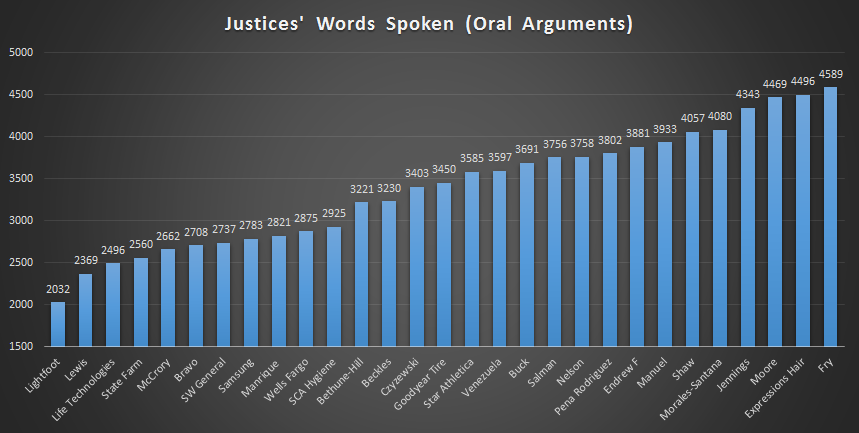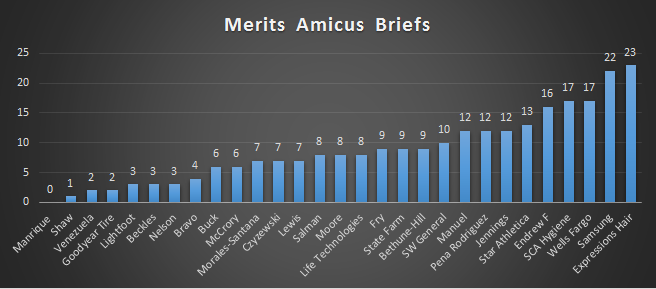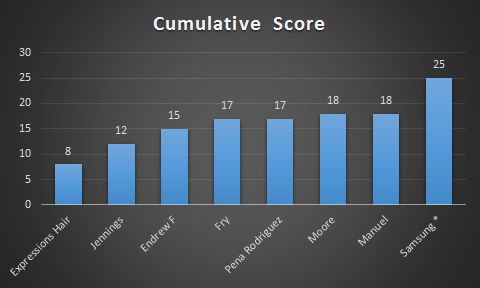Over the last few years the Supreme Court has heard multiple landmark cases. The issues in these cases ranged from abortion to marriage equality and from affirmative action in schools to national healthcare. So far this Term the Court has not heard cases of the same magnitude. While cases like Beckles v. United States may hold intrigue for legal scholars, and others like Endrew F deal with contentious claims regarding the appropriate level of education school children should receive under the Individuals with Disabilities Education Act, these cases have yet to attract anywhere near the attention that cases have in previous years.
This does not mean the Term will not pick up steam as it moves forward. On January 13th, the Court granted an additional sixteen cases in what was by far the biggest one day for grants this Term. The Justices also recently granted cert in the case of Gloucester County School Board v. G.G. which received nationwide coverage regarding the transgender restroom rights.
Putting aside the rest of the Term for a moment, this article looks at the twenty-nine cases already argued this Term. Are there any that standout for their importance? Do any resonate with large sectors of the public as Supreme Court cases generally have in recent years? Scholars have developed several measures for case salience that examine different indicators to gauge case importance. This article will look at the twenty-nine argued cases according to three such metrics to discern if there is a case or cases that are particularly important of those already argued. At very least it will help rank the cases in terms of their relative importance across several dimensions.
One measure looks at the importance of cases to the Justices. This measure developed by Ryan Black, Tim Johnson and Maron Sorenson uses the aggregate number of words the Justices speak at oral argument to measure the relative case salience. While this measure can be widely skewed by one Justice dominating the arguments (Justice Breyer in many instances in this Term and in previous Terms), it provides an exogenous measure of case importance that can easily compare cases. The cases already argued this Term are compared according to this measure below.

The Justices spoke the most in Fry v. Napoleon, then in Expressions Hair, and Moore v. Texas. None of these three cases were in the top three cases for Justice Breyer’s total word count for oral argument and although he was verbose in these cases, Justice Kagan, for instance, spoke over 1,000 words in Fry v. Napoleon as well.
An endogenous measure of salience that shows how important a case is to various interests is a count measure of merits amicus filings. This measure also provides an indication of the diversity of interests in a case. In recent years, landmark decisions such as Obergefell, Windsor, and Fisher received some of the most merits amicus filings across the history of the Supreme Court. The cases argued this Term are next ordered according to this metric.

The top three cases according to the amicus brief measure are Expressions Hair, Samsung v. Apple, and Bank of America v. Miami. These cases and especially Samsung v. Apple deal with large corporations and their potential economic impact as well as impact on existing law (patent law in the Samsung case) may have been a motivating factor for the relatively large number of filings in a few cases. Note however that in previous Terms the Court has regularly seen multiple cases with over thirty merits amicus filings so these amicus counts are still relatively low even at the high end.
A third measure that indicates public importance is through newspaper coverage. This measure was initially developed by Lee Epstein and Jeff Segal based on looking at whether a case was mentioned on the front page of the New York Times the day after the decision was released. Others have loosened the media metric to account for more variation in coverage. I use a somewhat amended version of this metric in this article that looks at the number of US Newspapers that discussed each case between the day before and the day after the case was argued.

This measure shows that many cases do not receive much, if any, newspaper coverage surrounding their oral arguments. Due to the companies involved, there was a large amount of coverage in Samsung v. Apple, but there is really a large drop-off after this case to all other cases argued so far this Term.
These three measures look at case importance from different angles. To create a simple index I ranked each case according to each metric. For the cases that were in the top ten for each of the three measures I then added their relative ranking within each measure. This index is used to provide a cumulative assessment of the most important cases argued so far this Term and moves from the smallest number as most important to the highest number as least important (of these specific cases).

First, Samsung v. Apple is included with an asterisks because even though it is not in the top ten for the words spoken by the Justices, it ranks number one for newspaper coverage and number two for amicus filings. All of the other cases were in the top ten for all three categories.
Expressions Hair, a case looking at credit card fees that merchants pay in retail transactions, is most important according to this index. There are broad implications for the decision in this case and this is evidenced through its ranks as first for most amicus briefs filed on the merits in a case already argued, second for the Justices’ total word count, and fifth for the number of newspaper articles discussing the case. Rounding out the top three most significant cases according to this measure are Manuel v. City of Joliet, which looks at Fourth Amendment rights when a person is held in custody for a prolonged period of time due to what is later claimed as malicious prosecution, and Moore v. Texas, which looks at the medical standards applied to determine if an individual is sufficiently mentally competent to be sentenced to death.
While this analysis only looks at the first twenty-nine argued cases this Term, within this set of relatively tame cases by many standards, it provides a means to rank the cases according to their importance.
On Twitter: @AdamSFeldman
One Comment Add yours